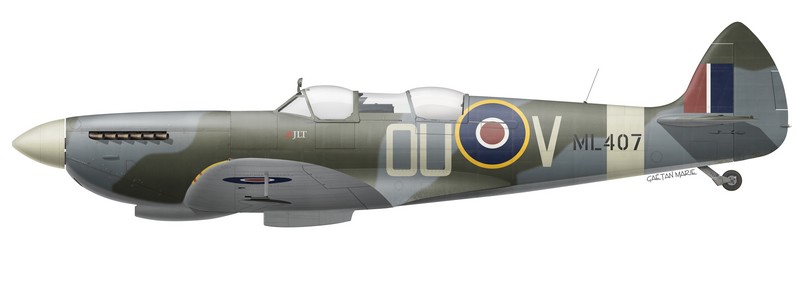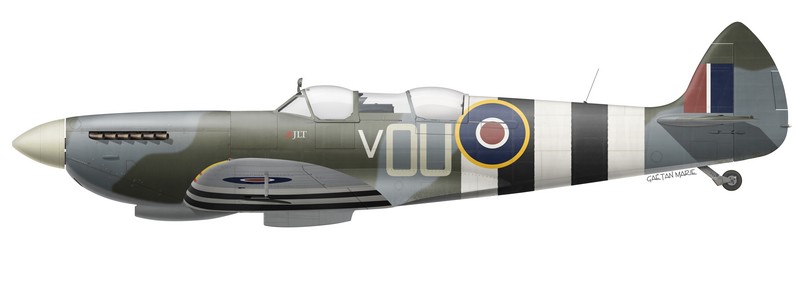I’ve recently been working on the Spitfire’s two-seat variants. Some of the resulting profiles will have to wait a bit before they can be published, but here are already two profiles of the most famous twin-seat Spitfire : ML407, also know as the “Grace Spitfire”.


ML407 was built at Castle Bromwich in early 1944 as a Mark IX single-seat fighter. It first served with No 485 (New Zealand) Squadron and F/O Johnnie Houlton DFC used it to claim the first enemy aircraft to be shot down over the Normandy beach-head on 6 June 1944. It later served with No 341 (Free French) Squadron, No 308 (Polish) Squadron, No 349 (Belgian) Squadron, No 345 (Free French) Squadron, No 332 (Norwegian) Squadron and finally back to No 485 (New Zealand) Squadron at the cessation of hostilities. During the course of its wartime career, it flew 176 operational combat sorties for a total of 319 combat hours.
Post war, it was converted by Vickers-Armstrong to a TR.9 two-seat trainer and served with the Irish Air Corps at Baldonnel until 1968. It was restored to airworthiness from 1979 to 1985 by engineer Nick Grace who converted it to its current configuration. When Nick Grace died in an accident in 1988, his widow Carolyn Grace learned to fly it, and displayed ML407 in numerous airshows from 1991 to 2017 in memory of Nick Grace. The aircraft is now stil being flown for displays and passenger rides by a team of pilots led by Carolyn and Nick’s son Richard Grace.
You can learn more about the “Grace Spitfire” here, or even better : book a flight in her !
Prints of ML407 with and without invasion stripes are available from Bravo Bravo Aviation